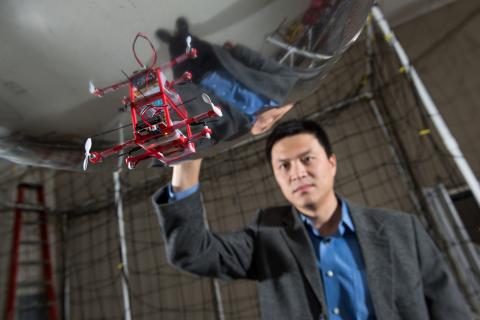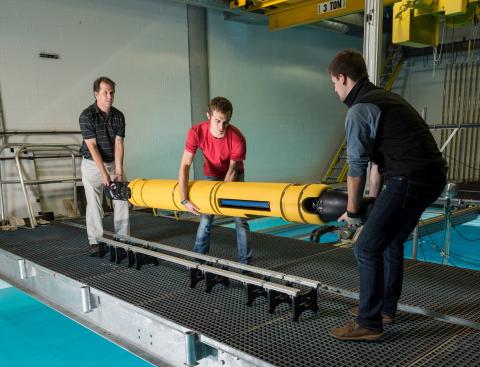As a team of unmanned quadrotor aircraft hovers above, six small ground robots roll into an unfamiliar two-story structure. Soon, the rotorcraft are darting about mapping the upper floor, while the ground vehicles chart the lower floor, process both teams’ data, and produce a full building plan for computers outside.
As a team of unmanned quadrotor aircraft hovers above, six small ground robots roll into an unfamiliar two-story structure. Soon, the rotorcraft are darting about mapping the upper floor, while the ground vehicles chart the lower floor, process both teams’ data, and produce a full building plan for computers outside.
Notably absent are human beings and radio control devices. This little squadron is fully autonomous.
In robotics, autonomy involves enabling unmanned vehicles to perform complex, unpredictable tasks without human guidance. Today, in the early stages of the robotics revolution, it’s among the most critical areas of research.
“The move to true autonomy has become highly important, and progress toward that goal is happening with increasing speed,” said Henrik Christensen, executive director of the Institute for Robotics and Intelligent Machines (IRIM) at Georgia Tech and a collaborator on the mapping experiment. “It won’t happen overnight, but the day is coming when you will simply say to a swarm of robots, ‘Okay, go and perform this mission.’”
Traditionally, robotic devices have been pre-programmed to perform a set task: Think of the factory robot arm that automatically performs a repetitive function like welding. But an autonomous vehicle must be fully independent, moving — without human intervention — in the air, on the ground, or in the water. Well-known examples include the prototype self-driving vehicles currently being tested in some U.S. cities.
Additional Images

